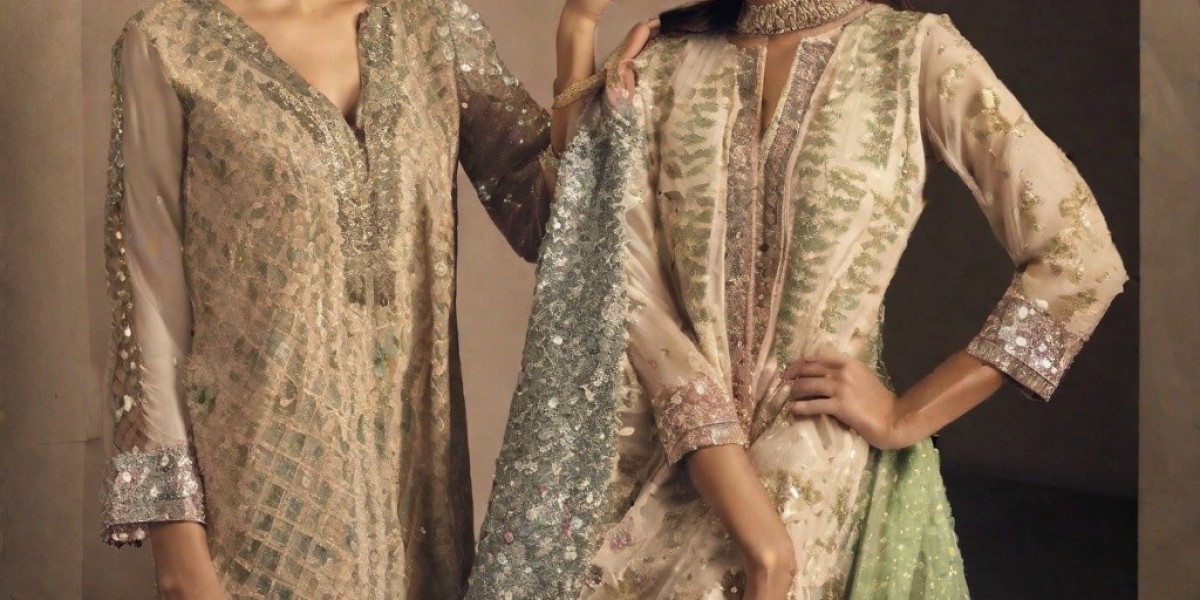In the realm of artistic expression, Mukesh and Kamdani stand as paragons of timeless craftsmanship. This intricate art form has woven itself into the fabric of cultures, transcending epochs with its delicate beauty and meticulous detailing. This article delves into the captivating world of Mukesh and Kamdani, exploring its rich history, intricate techniques, and contemporary relevance.
The Enigmatic Mukesh and Kamdani Art
Mukesh: A Tapestry of Tradition
Mukesh, a term rooted in cultural heritage, signifies the art of embellishment through metallic threadwork. This ancient craft finds its roots in India, where artisans meticulously weave tales of tradition onto fabric. The allure of Mukesh lies in its ability to transform ordinary textiles into opulent masterpieces, each thread telling a story of artistic finesse.
Kamdani: Where Art and Craft Converge
Kamdani, the soulmate of Mukesh, is an art form where tiny metallic pieces are used to embellish fabrics. Originating from the Persian word 'kam', meaning little, and 'Dani', referring to pieces, Kamdani encapsulates the essence of intricate detailing. As skilled artisans expertly add these minuscule elements to fabrics, they breathe life into mundane surfaces, creating a mesmerizing dance of light and texture.
The Historical Tapestry
Mukesh and Kamdani in Ancient Times
Tracing its origins to the Mughal era, Mukesh and Kamdani have adorned the attire of royalty. The opulence of these embellishments became synonymous with status and sophistication. As centuries unfolded, the craft evolved, retaining its cultural significance while adapting to contemporary tastes.
Revival in Modern Fashion
In the 21st century, Mukesh and Kamdani have experienced a revival, gracing international runways and red carpets. Fashion designers, recognizing the timeless allure of this craft, have incorporated it into their collections, bridging the gap between tradition and modernity.
Techniques Behind the Artistry
Mukesh: A Symphony of Metal Threads
Crafting Mukesh involves intertwining metallic threads onto the fabric, creating intricate patterns. Artisans use specialized needles to meticulously attach these threads, ensuring durability and aesthetic appeal. The result is a dazzling display of metallic brilliance, transforming garments into works of art.
Kamdani: Precision in Every Stitch
The creation of Kamdani is an exercise in precision. Artisans affix tiny pieces of metal, often gold or silver, onto the fabric. The process demands unwavering focus and skill, as even the slightest deviation can alter the entire aesthetic. The final product is a visual feast, with metallic elements catching the light in a dance of elegance.
Mukesh and Kamdani in Contemporary Fashion
Redefining Elegance in Clothing
In the contemporary fashion landscape, Mukesh and Kamdani have become synonymous with luxury and sophistication. Designers leverage these techniques to elevate everyday garments, infusing them with a touch of regality. From bridal wear to haute couture, the versatility of Mukesh and Kamdani knows no bounds.
Artistic Collaborations
The allure of Mukesh and Kamdani has transcended traditional attire, inspiring collaborations with global brands. From accessories to home decor, this ancient craft has found new avenues of expression, captivating audiences worldwide.
Mukesh and Kamdani: A Closer Look
Delving into the intricacies of Mukesh and Kamdani reveals a world where artistry meets tradition, where threads of metal weave narratives of cultural richness. This unparalleled craftsmanship continues to captivate hearts, leaving an indelible mark on the global stage.
FAQs
What makes Mukesh and Kamdani unique?
Mukesh and Kamdani stand out for their intricate detailing and historical significance. These crafts transform ordinary fabrics into opulent masterpieces, carrying tales of tradition and elegance.
Are Mukesh and Kamdani only used in traditional attire?
While Mukesh and Kamdani have historical roots in traditional attire, they have seamlessly integrated into contemporary fashion. Designers worldwide use these techniques to add a touch of luxury to various clothing and accessories.
How labor-intensive is the process of creating Mukesh and Kamdani?
Crafting Mukesh and Kamdani requires immense skill and patience. Artisans meticulously weave threads or affix tiny metallic pieces, demanding hours of focused work to achieve the desired result.
Can Mukesh and Kamdani be customized?
Yes, Mukesh and Kamdani offer a high level of customization. Artisans can tailor the designs to suit individual preferences, making each piece unique and personalized.
Are there sustainable practices in Mukesh and Kamdani craftsmanship?
Efforts are being made to adopt sustainable practices in Mukesh and Kamdani production. Some artisans use eco-friendly materials and adhere to ethical manufacturing processes, contributing to the global shift towards sustainable fashion.
Where can one purchase authentic Mukesh and Kamdani products?
Authentic Mukesh and Kamdani products can be found through reputable designers, boutique stores, or online platforms specializing in traditional craftsmanship. Ensure the source is trustworthy to guarantee the authenticity of the craft.
Conclusion
In the realm of Mukesh and Kamdani, tradition meets innovation, creating a tapestry of timeless elegance. This article has unraveled the intricate details behind these crafts, showcasing their historical significance and contemporary relevance. As the world continues to embrace the allure of Mukesh and Kamdani, their legacy as symbols of artistic finesse remains firmly intact.



